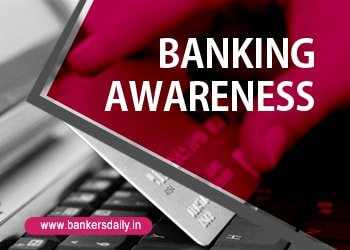Computerization in banks
Computerization in banks
As the Indian banking and financial system develops and gets integrated with the international financial markets, it has to be technically ready to meet the challenges. The banks in India are gearing to shed their age-old style of functioning and to adopt the computer-aided modern system and procedure on the lines of what has been done in other parts of the world.
Employee involvement in technology up gradation
For successful implementation of computerization/mechanization programme and technology up gradation, cooperation of the indispensable and equally, their apprehensions in this regard need to be removed. The bipartite negotiations between IBA representing bank management and the bank employees’ unions constitute a mechanism for resolving various issues about the use of higher technologies in bank and in working out acceptable levels of Computerization.
Way back in 1966, the IBA, alone with the exchange banks association signed the first wage settlement with the unions, which inter alia provide for using IBM or ICT accounting machines for inter branch reconciliation, agency accounts, salary and provident fund accounts, etc.
In 1983, for the first time a comprehensive settlement exclusively for computerization/mechanization was signed, providing for installation of Advanced Electronic Ledger Posting Machines (AELPMs) at branches, mini computers at Zonal/Regional Offices and one mainframe computer for each bank. The second computerization settlement of 1987 defined the scope of AELPMs, their configuration and also fixed the parameters for branches where the machines could be installed.
BANKNET
Banknet is a payment network established by RBI which functions with in India and was launched during 1991. The system makes use of inter-city trunk voice grade data circuits. The user bank can access BANKNET from their premises through lease or dial-up lines at the local centres using ports on PADS and UNIX machines with popular data communication softwares. The message of banking transactions can be transferred in coded form for settlement of transaction and advices. It enables transfer of data and other statement to RBI. Access to SWIFT is also possible through this system.
RBINET
It is a communication system operating over the BANKNET. RBINET client running a personal computer is called RBINET Dos client and he can communicate with its server over a dedicated leased line or dial up line.
I-net
I-net owned by Deptt of Telecommunications (DoT) is a packet switching public data network (PSPDN) which was opened in 1983 for slow speed data communication. I-net uses telephone connection and satellite for communication through which communication is possible across major metropolis and other international network. The subscribers can also from a private network within I-net.
NICNET
National Informatic Centre Network (NICNET), a part of internet services was set up in 1975 to promote information culture which is a govt organization. It provides multiple services to user department which include finance, agriculture, industry, commerce by making use of various applications. The host computer in NICNET is stationed in New Delhi. Currency chest operations in banks are performed through NICNET.
INFINET
Indian financial Network, the satellite based VSAT network developed by institute for development and research on banking technology (IDRBT Hyderabad, an RBI sponsored organization) is fast and secure intra-bank and inter-bank communication system.
Details of the applications on INFINET:
Intra bank
Funds transfer and payment messages bank owned ATM/credit card, debit care and other applications on corporate network
- Inter-branch reconciliation
- Quick disposal of loan/investment proposal
- Forex information from branches
- Fund information from clearing centres
- Cash and treasury management
- Any branch banking
- Asset liability management
- Auditing and inspecting computerized branches using the network
- Organizational bulletin boards
- Timely information to the top management
- Help in developing new products
Inter -bank
- Electronic fund transfer
- Clearing and settlement system for security delivery vs payment
- Transferring balances from net settlement system of real time gross settlement server at periodical intervals
- Exchange of defaulting borrowers’ list among RBI and banks
- Currency chest accounting
- Asset liability management for reporting to RBI
- Intranet in RBI to enable banks to get circulars and press releases
- Reporting of section 42 data to RBI
- Returns to the submitted by banks to Deptt of banking supervision for onsite supervision and monitoring.
Shared payment network system (SPNS)
- The Shared payment network system (SPNS) in Mumbai has been conceived by IBA.
- It will provide round-the-clock banking convenience since a customer of a bank can perform basic banking functions like cash withdrawals, balance enquiry etc at any ATM belonging to any one of the banks.
IBA Swadhan Network
- Swadhan IS IBA floated Shared payment network system (SPNS) in existence for the last five years. Over 56 banks are in the network and 43 have so far gone live.
- More than 1000 ATMs nationwide are Swadhan enabled, connecting over 67 cities to service about 2.6 million Swadhan-enable careholders.
- The Swadhan member banks include cooperative banks, private sector banks. Foreign banks etc. India Switch Company runs this network for a fee of Rs 5 per transaction.




